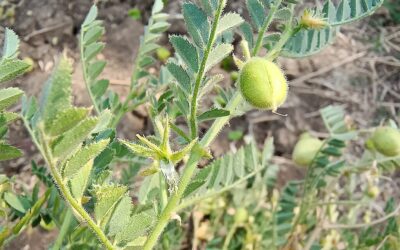PHOTO: Clubroot.
Alberta farmers only need to look at the history of their fields and weather from years past to predict what pests and crop diseases they’ll face this year. Part 3 of a four-part feature. Click here for Part 2.
Farmers can expect more of the same when it comes to diseases in their canola crops. As in years past, blackleg, sclerotinia and clubroot may impact crops. All three pathogens are in soils and canola residues across Alberta.
“Once that’s been introduced, it doesn’t go away either. So, prairie wide clubroot is already common — we can expect to see clubroot symptoms in regions it is established. And anywhere that we grow canola, or mustard in Alberta, we can expect to potentially see blackleg or sclerotinia,” Harding explains.
One disease that’s becoming more of a problem in canola, and therefore farmers should keep an eye out for, is verticillium stripe. It first showed up in Manitoba a number of years ago and has been moving around into new fields in Manitoba and Saskatchewan, with reports now starting in Alberta, Harding says.
To protect your canola crops against these diseases, Harding recommends you stick to a crop rotation with at least a two-year break between growing susceptible crops. Farmers should also grow canola varieties that have resistance to any diseases they have seen in their fields in the past. In season fungicide treatments can also be used for many fungal diseases.
“It’s always a good idea to keep crops as healthy as possible. The most important reason for that is so that we can reach the genetic potential with respect to yield,” Harding adds. “It also helps the crop; a stressed crop has a harder time mounting a disease response.”





